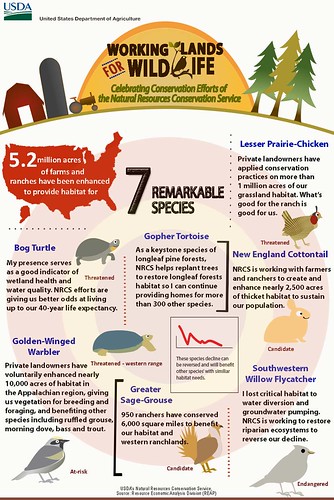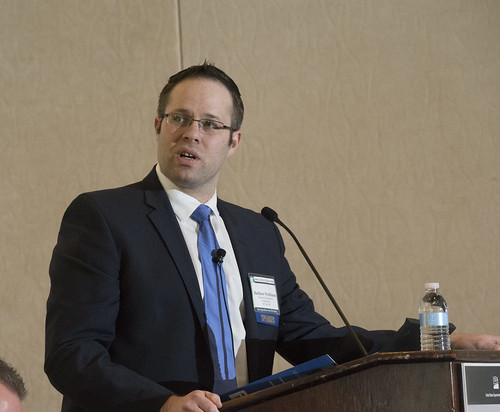
Regulations may be needed, but are they all we need? That was the common thread weaved through presentations by natural resource experts last week at USDA’s Agricultural Outlook Forum.
Panelists included: Chris Hartley, deputy director of USDA’s Office of Environmental Markets; Jim Serfis, chief of the communications and candidate conservation branch of U.S. Fish and Wildlife Service, (FWS); and Matthew Wohlman, assistant deputy commissioner of the Minnesota Department of Agriculture.
Part of the discussion focused on the voluntary conservation efforts of private landowners, which are having a tremendous impact on meeting regulatory needs through creating habitat for species facing population declines. These efforts – including the Working Lands for Wildlife Partnership, (WLFW), between USDA’s Natural Resources Conservation Service, (NRCS), and FWS – is to help create habitat for at-risk species.
This partnership provides certainty to landowners who use NRCS-prescribed conservation practices to improve their lands in ways that benefit wildlife.
Take for example, the southwestern willow flycatcher, an endangered bird that lives along rivers and streams in the Southwest. Water diversion, groundwater pumping, unmanaged grazing and invasive plants have diminished the riparian habitat, which have led to the bird’s populations declines.
NRCS has worked with FWS to expand conservation work throughout riparian zones in the arid Southwest, including Arizona, California, Colorado, New Mexico, Nevada and Utah.
Through WLFW, NRCS works with private landowners to implement conservation practices that improve habitat for the southwest willow flycatcher while also boosting working lands operations. Since 2012, NRCS and private landowners have put conservation systems on nearly 7,000 acres.
Also, NRCS works with ranchers to install fences along riparian areas, keeping cattle from damaging critical habitat. NRCS also helps ranchers install cross-fencing, dividing large pastures into smaller ones. This system, called rotational grazing, provides better forage for livestock while also preventing pastures from being overgrazed and prone to erosion. Additionally, NRCS works with farmers to irrigate more efficiently, thus conserving water to ensure rivers and streams maintain water levels.
Additionally, NRCS and FWS have developed a habitat evaluation guide that planners can use to identify existing and potential habitat for the species. The two agencies have also developed conservation systems that can be used to improve habitat for the flycatcher, as well as 83 other listed or candidate species, while also incorporating continued grazing and other agricultural production.
Because nearly two thirds of all species federally listed as threatened or endangered, such as the southwest willow flycatcher, exist on private lands, landowners play an important role in helping America’s at-risk wildlife succeed.
Learn more about Working Lands for Wildlife. To get started with NRCS, visit your local USDA Service Center or www.nrcs.usda.gov/GetStarted.

